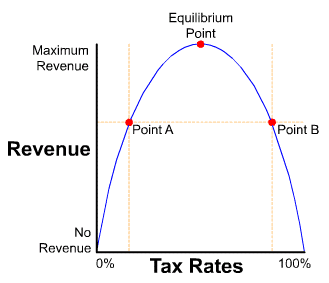- Thread starter
- #61
yes I understand that, and the next questions begs to be asked; so why then after what, say 60 years as you said there has not been a study, model data set generated for the US that either proves or disproves the issue?
and, so let me ask you a question; do you think they should allow the cuts to expire?
There have been several studies that have disproved this. I linked them above, at least the ones that come from Republican economists. What I'm saying is that I have never seen any studies that have proven that the US economy is on the left hand side of the Laffer Curve. I don't think Arthur Laffer himself ever published a paper proving his thesis. If I recall correctly, it was merely a theory.
That applies to US income tax rates. There is empirical evidence that cutting corporate tax rates and royalty rates on natural resources does generate more than enough economic growth to offset the loss in revenues from those tax cuts. There is also evidence that in third world countries with high tax evasion, cutting taxes along with increased penalties for tax evasion increases revenues. But there has never been any empirical evidence, at least that I'm aware of, which proves this to be the case for US income tax rates. Yet it is deeply embedded within mainstream Republican and "conservative" thinking, as you can see in this thread. I think its the biggest intellectual fraud in the political-economy over the past 30 years.


